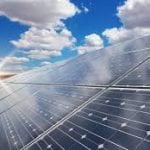While Australia’s energy grid continues to creak and groan under the severe stress of a nationwide power shortage and pseudo liberalised energy market, a woman has begun to trail blaze a path towards power sharing.

The idea came to Jemma Green – a former investment banker based in London – while she was taking part in the Camino de Santiago Pilgrim Trail in 2012.
She returned to Perth and forged an idea into a workable solution that could change the way Australians think about power generation. That solution is called Power Ledger… think of it like the Uber or Airbnb of energy.
Think of it as the Uber or Airbnb of energy
Power Ledger works through the sharing of assets – it is a trading platform that enables households, businesses or anyone else with solar panels or batteries who wants to store and trade off their surplus energy.
The business model is currently in trial phase at schools, households and businesses in Western Australia and Auckland and there are also talks for trials to be held in New South Wales, Queensland and Victoria
“by 2025 I think our energy system will be unrecognisable from what it is today”
Ms Green and other entrepreneurs believe that due to changing technology, big power generation companies will have to adapt or will eventually see their business model gradually crumble and eventually collapse.
She points to the airline, music and retail industries as perfect examples of how things need to change if certain business sectors – including power generation – are to remain profitable.
Energy business models will fail
In a recent interview, she said: “I think over the next five years you’ll start to see significant deployment of household batteries, grid-connected batteries and electric vehicles, which are effectively batteries on wheels, into our energy system. And by 2025 I think our energy system will be unrecognisable from what it is today.”
New technology is transforming the traditional centralised grid of big power stations, peaking plants and radial, one-way transmission and distribution networks. Think of the current grid as the early internet – few providers, few channels for distribution and only a few search engines that had the monopoly.
Compare that to the internet today – criss-crossed web reference with a multitude of providers serviced by personalised search engines and multiple connected devices through which a user can access a service.

That is how the energy grid is evolving – a decentralised, but interconnected grid that includes the distributed energy generated in people’s homes and business premises. This includes solar panels, batteries, energy management software and smart thermometers which control power-hungry appliances such as air-conditioners, pool pumps and electric vehicle chargers.
The emerging digital platforms are similar to Airbnb and Uber because they promote sharing or use of assets that would otherwise not be exploited to their best advantage. Could this be the future? It will not all fall into place in one fell swoop, and we could see mistakes being made in terms of reliance on particular sources, but the truth is that there is so much waste and if we can somehow trade with each other digitally and transparently, the days of relying on a big plug connecting your home or business to the grid could soon be over.
How does it work?
Power Ledger allows renewable asset owners to decide who they want to sell their surplus energy to and at what price. Their blockchain technology provides a transparent, automated, and auditable market trading and clearing mechanism for the sale of excess renewable energy produced on-site at multi-unit residential and commercial developments and at businesses and homes connected to the distribution network.

Each unit of electricity is tracked from the point of generation to the point of consumption within the building it is generated, or when sold to other consumers, using the local electricity distribution network. Their technology couples a tracked energy transaction with a financial one, making the process of realising the value of renewable energy investments simple and secure. Energy traded across the distribution network is tracked providing a secure revenue stream for DNSPs.
You can read more about Power Ledger here.













